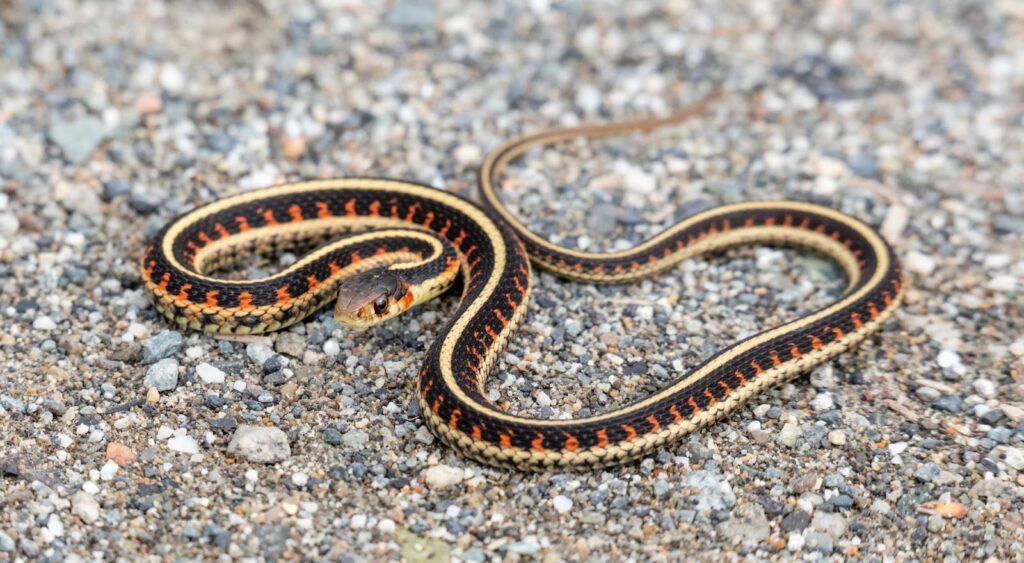Table of Contents
ToggleIntroduction

Hawaii, known for its breathtaking landscapes, vibrant culture, and diverse wildlife, stands out as a unique ecological wonder. Does Hawaii Have Snakes? sits distinct feature is the absence of native land snakes, a characteristic that sets it apart from many other places worldwide. This article delves into the fascinating story behind Hawaii’s snake-free status. Exploring the ecological, historical, and protective measures contributing to this remarkable phenomenon.
Hawaii’s Unique Ecological Landscape
Geological Origins and Isolation: Hawaii’s volcanic origin and remote location in the middle of the Pacific Ocean played a pivotal role in shaping its biodiversity. Its isolation from continental land masses and relatively recent geological emergence limited the natural introduction of terrestrial species. Including snakes, resulting in a unique ecosystem devoid of these reptiles.
Evolutionary Adaptations: Over millions of years, native Hawaiian flora and fauna evolved in the absence of snake predators. This absence has influenced the behavior and adaptations of various species, fostering an ecosystem where birds, and insects. Other animals do not face the predation pressures imposed by snakes in other parts of the world.
Historical Perspectives On Snakes In Hawaii
Indigenous Beliefs and Mythology: Native Hawaiian culture is steeped in reverence for the land and its creatures. Traditional beliefs and mythology seldom mention snakes, reflecting their absence from the archipelago. Snakes were not part of the indigenous ecosystem and narratives, contributing to their exclusion from Hawaiian folklore.
Human Introductions and Invasive Species Concerns: While snakes are not native to Hawaii, there have been sporadic incidents of non-native snake species being introduced unintentionally or illegally. These instances have raised concerns about potential threats to the delicate balance of the island’s ecosystems, prompting stringent regulations and protective measures.
Protective Measures And Biosecurity Protocols

Strict Quarantine and Inspection Policies: Hawaii maintains stringent biosecurity protocols at its ports of entry. Rigorous inspections and quarantine measures are in place to prevent the accidental introduction of invasive species, including snakes, into the islands. These measures help safeguard the unique biodiversity that defines Hawaii’s ecosystems.
Public Awareness and Education: Efforts to raise public awareness about preserving Hawaii’s delicate ecosystem are ongoing. Educational campaigns emphasize responsible travel practices and prohibit bringing live animals, including snakes, to protect the islands’ natural habitats.
Environmental Impact And Conservation Efforts
Ecosystem Resilience and Balance: The absence of snakes in Hawaii has contributed to preserving native species and their habitats. Bird populations, for instance, thrive without the threat of snake predation, maintaining a crucial balance within the island’s ecosystems.
Conservation Initiatives and Biodiversity Preservation: Conservationists and environmental organizations in Hawaii actively work to protect the islands’ biodiversity. By focusing on habitat restoration, species conservation, and sustainable practices, these initiatives aim to ensure the continued absence of snakes and the preservation of Hawaii’s unique natural heritage.
Understanding Snake Absence In Hawaii
Geographical Isolation and Natural Barriers: The geographic isolation of Hawaii, formed through volcanic activity millions of years ago. Created a natural barrier that prevented the migration of snakes from other continents. The vast ocean surrounding the archipelago was a formidable obstacle for land-dwelling species like snakes to reach the islands.
Lack of Suitable Habitats: Hawaii’s diverse landscapes, including volcanic terrain, lush rainforests, and coastal regions, offer varied habitats for its unique flora and fauna. However, the absence of suitable environments for snakes and the islands’ distinct climate and ecosystems. Further hindered the establishment of snake populations.
Potential Threats And Incidents
Occasional Snake Sightings and Concerns: While Hawaii is predominantly snake-free, occasional sightings of non-native snake species have occurred. These incidents often involve snakes being brought into the islands illegally or inadvertently through cargo shipments. Immediate action by authorities is taken to contain and remove these invasive species to prevent potential ecological disruptions.
Impact on Native Species: Introducing non-native species, including snakes, poses a significant threat to Hawaii’s native flora and fauna. The absence of natural predators, such as snakes, has allowed certain species to evolve without the defenses needed to withstand predation. Consequently, introducing snakes could lead to the decline or extinction of vulnerable native species.
Protective Measures And Conservation Strategies

Legislation and Biosecurity Enhancements: Hawaii has stringent laws and regulations prohibiting the importation and possession of snakes without proper permits. Additionally, advancements in biosecurity technologies and increased surveillance at ports of entry are crucial deterrents to prevent the accidental introduction of snakes and other invasive species.
Collaborative Conservation Efforts: Government agencies, conservation organizations, and local communities collaborate on conservation projects to preserve Hawaii’s delicate ecosystems. These initiatives involve habitat restoration, species monitoring, and public engagement programs to foster a deeper appreciation for the islands’ unique biodiversity.
Public Perception And Cultural Significance
Public Perception of Snakes: The absence of snakes in Hawaii has shaped public perceptions, with many residents and visitors expressing appreciation for the safety and tranquility of these reptiles. This sentiment contributes to a cultural appreciation for the islands’ unique ecological heritage.
Cultural Celebrations and Symbolism: The absence of snakes in indigenous Hawaiian culture is reflected in various traditions and celebrations, where snakes hold little to no symbolic significance. Instead, reverence is given to other animals, plants, and natural elements deeply rooted in Hawaiian mythology and traditions.
Conclusion
Hawaii’s snake-free status is a testament to the interplay of geological history, cultural beliefs, and stringent biosecurity measures. This absence has contributed to the islands’ distinct ecological landscape, fostering a harmonious environment where native species thrive without the threat of snake predation. Preserving this delicate balance remains crucial to safeguarding Hawaii’s biodiversity and ensuring the perpetuation of its status as a paradise untouched by these reptiles. As guardians of this natural haven. Continued vigilance and conservation efforts are imperative to maintain the integrity of Hawaii’s snake-free paradise for generations to come.







